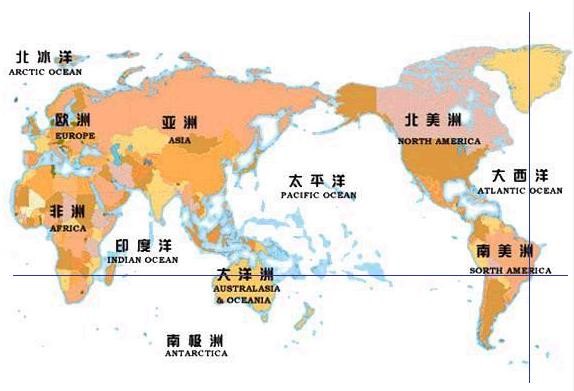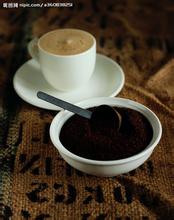Papua New Guinea Fine Coffee Black Coffee
Fine coffee has a rich and wonderful taste. Even if the coffee made with fine coffee beans is not all fine coffee, it depends on whether it gives full play to the characteristics of coffee beans, whether it has a good taste feeling, if not, it cannot be called fine coffee.
The legendary background of modern coffee.
In Papua New Guinea, about 75 percent of coffee production comes from small, local farms. Many farms cultivate land in forested areas, and some farms are deep in forests, almost isolated from the rest of the world. Coffee in the country is grown at altitudes of 1,300 to 1,800 meters, so it is of high quality. Coffee is grown in some lowlands, but relatively little is produced. Locally grown coffee is mostly grown under natural conditions because of the transportation problems and high costs involved in getting fertilizers and pesticides to farms.
Coffee plays an important role in the country's economy. More than 1 million people are directly and indirectly engaged in this industry. The government encourages planting by offering minimum purchase prices. The industry itself is controlled by the Coffee Industry Board. The Commission is located in Goroka, in the eastern part of the island, but exports are handled by private companies.
The 1975 frost destroyed most of Brazil's coffee crop, but spurred coffee growth in Papua New Guinea. The Government has introduced a scheme to finance rural or collective land ownership, which has resulted in the creation of coffee plantations of about 20 hectares. This measure has indeed increased the penetration of coffee cultivation into the local economy, with annual production reaching 1 million bags by 1990.
However, it is almost inevitable that the surge in production will lead to a decline in quality. Before 1991, the quality of coffee was acceptable, most of which belonged to the open Y class. After 1991, the quality gradually declined and the European market was lost. The extra price that Y grade coffee once had has also gradually fallen. This has to do with the country's "one price per class" policy. This policy is simply not feasible for an industry as volatile as coffee. As a result, poor quality coffee beans damaged the image of Y coffee high quality standards, resulting in a backlog situation.
The government's response was to establish new quality grades, temporarily stop producing Y grade coffee, and no longer implement the "one grade one price" policy. This allows buyers to price according to quality, which inevitably affects the income of farmers who produce inferior coffee beans. By 1993, the quality problem had basically been solved. Most of our regular customers are buying coffee from Papua New Guinea again. Y-grade coffee is now sold at a slightly lower premium price, indicating an improvement in quality.
Although coffee trees grow vigorously in some places, the coffee beans harvested vary in maturity and size due to the lack of persistence of growers. AA is rare, and you can usually buy A and AB. The main characteristics of A-grade coffee are: fullness of particles, light acidity, and endless aftertaste after drinking. There's another type of Hawaiian coffee that's right: Kai Farms.

Important Notice :
前街咖啡 FrontStreet Coffee has moved to new addredd:
FrontStreet Coffee Address: 315,Donghua East Road,GuangZhou
Tel:020 38364473
- Prev

What environmental conditions do you need to grow coffee? Nanyang flavor white coffee quality
However, not all the areas with the above conditions can become coffee producing areas, and suitable soil conditions are needed to cultivate high-quality coffee. Loose, fertile, deep soil and well-drained soil are important conditions for growing coffee. In addition, the soil properties should be sour, and the PH value is between 5.5 and 6.5. I still remember a long time ago there was an advertisement for Colombian coffee, in which
- Next

The production of coffee, the planting technology of coffee manor.
Arabica coffee and Robbite coffee are harvested once every 3 to 4 years, and their lifespan varies due to different production conditions and different degrees of care (usually 20 to 30 years, after which they have to be replanted). Both varieties need plenty of sunlight and moisture. Arabian coffee trees like the seasonal climate of 15-24 ℃; Robbins like warm.
Related
- Does Rose Summer choose Blue, Green or Red? Detailed explanation of Rose Summer Coffee plots and Classification in Panamanian Jade Manor
- What is the difference between the origin, producing area, processing plant, cooperative and manor of coffee beans?
- How fine does the espresso powder fit? how to grind the espresso?
- Sca coffee roasting degree color card coffee roasting degree 8 roasting color values what do you mean?
- The practice of lattes: how to make lattes at home
- Introduction to Indonesian Fine Coffee beans-- Java Coffee producing area of Indonesian Arabica Coffee
- How much will the flavor of light and medium roasted rose summer be expressed? What baking level is rose summer suitable for?
- Introduction to the characteristics of washing, sun-drying or wet-planing coffee commonly used in Mantenin, Indonesia
- Price characteristics of Arabica Coffee Bean Starbucks introduction to Manning Coffee Bean Taste producing area Variety Manor
- What is the authentic Yega flavor? What are the flavor characteristics of the really excellent Yejasuffi coffee beans?

